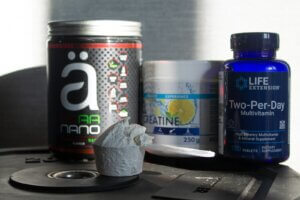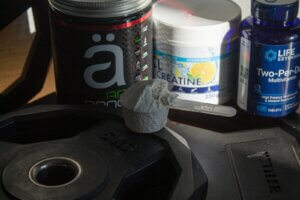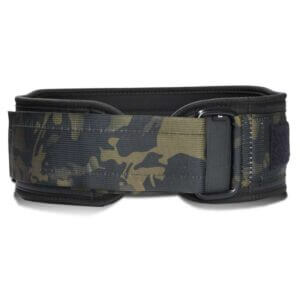How to do Romanian Deadlift (RDL)
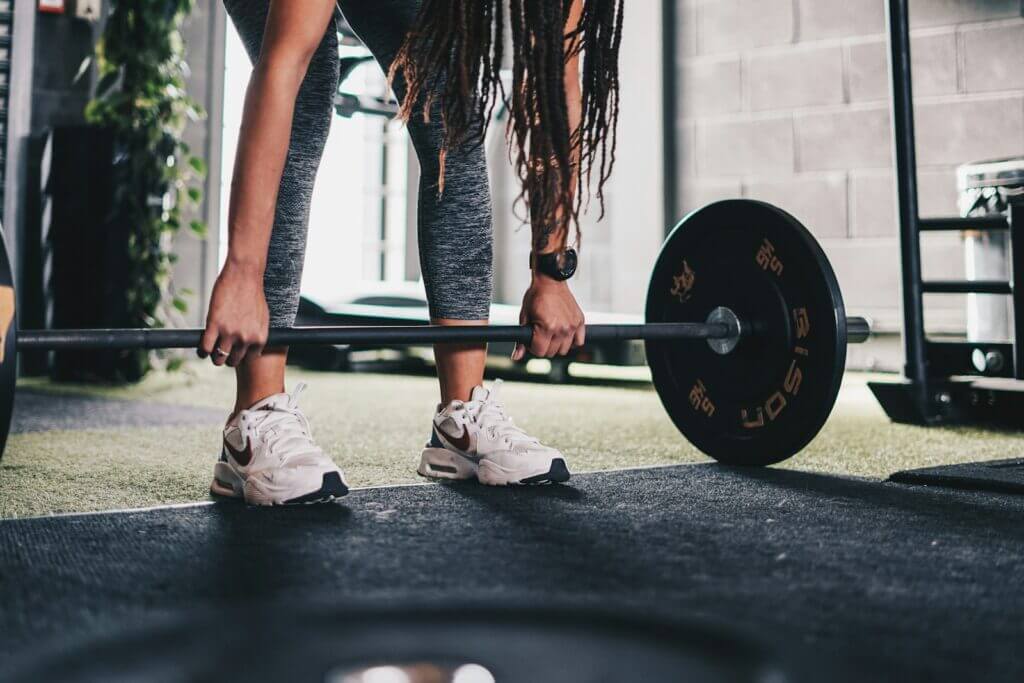
Introduction:
The Romanian Deadlift (RDL) is a fundamental exercise in both CrossFit and traditional strength training, focusing on developing posterior chain strength, stability, and flexibility. Unlike the conventional deadlift, the RDL emphasizes the hamstrings, glutes, and lower back by keeping a slight bend in the knees and maintaining a hip-hinge movement pattern. This exercise is particularly beneficial for improving overall lower body strength, enhancing athletic performance, and reducing the risk of injury. In this guide, we’ll walk you through the steps to perform a proper Romanian Deadlift, discuss the equipment you’ll need, provide scaling options, highlight common mistakes, and explore the benefits and muscle groups worked.
Steps in the Romanian Deadlift movement
- Starting Position:
- Stand with your feet hip-width apart, holding a barbell or dumbbells in front of your thighs with an overhand grip.
- Keep your shoulders back, chest up, and core engaged.
- Hip Hinge:
- Begin the movement by pushing your hips back while keeping a slight bend in your knees.
- Maintain a flat back and neutral spine as you lower the weight, focusing on hinging at the hips rather than bending at the waist.
- Lowering the Weight:
- Lower the barbell or dumbbells until you feel a stretch in your hamstrings, typically just below the knees.
- Keep the weight close to your body, almost grazing your legs as you descend.
- Returning to Start:
- Reverse the movement by driving your hips forward, engaging your glutes and hamstrings to return to the starting position.
- Keep your back flat and shoulders retracted throughout the movement.
- Repeat:
- Perform the desired number of repetitions, ensuring each rep is controlled and focused on maintaining proper form.
What Equipment is needed
- Barbell or Dumbbells: Essential for performing the RDL with added resistance.
- Weight Plates: To adjust the weight on the barbell according to your strength level.
- Lifting Belt (optional): For additional lower back support.
- Chalk (optional): To improve grip, especially during heavier lifts.
To perform Romanian Deadlifts effectively and safely, having the appropriate equipment is essential. A quality barbell is fundamental, and investing in an Olympic barbell can provide the durability and grip needed for heavy lifting. Pair this with adjustable weight plates to customize the load according to your strength level. Weightlifting shoes with a slight heel lift can aid in maintaining proper posture and balance during the lift, enhancing stability. Additionally, using lifting straps can assist in maintaining grip, especially during heavier sets, allowing you to focus on form and muscle engagement without grip fatigue. Incorporating a lifting belt can provide extra support to your lower back by increasing intra-abdominal pressure, promoting better spinal alignment. Investing in these pieces of equipment not only enhances performance but also contributes to safety and longevity in your lifting journey
Check out the Equipment subsite for more tools, tips, and inspiration.
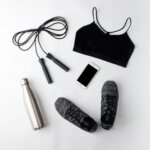
Shop Fitness gear now on Amazon
See Amazons extensive range of workout gear here. (Affiliate Link)
Scaling Options:
To gradually build strength and proficiency, consider the following scaling options:
- Reduced Weight: Start with lighter weights to master the form before progressing to heavier loads.
- Single-Leg RDL: Perform the exercise on one leg to reduce the weight and increase the stability challenge.
- Resistance Bands: Use bands to provide resistance without the need for heavy weights, ideal for beginners or those recovering from injury.
Common Mistakes to Avoid:
- Rounding the Back: Keep your back flat and core engaged to avoid rounding your spine, which can lead to injury.
- Bending the Knees Too Much: Maintain a slight bend in the knees but focus on hinging at the hips rather than squatting.
- Lifting Too Heavy: Start with a manageable weight to ensure proper form and gradually increase the load as you gain strength.
- Not Engaging the Core: Keep your core tight throughout the movement to support your lower back and maintain stability.
Benefits of the Movement:
- Strength Development: Targets the hamstrings, glutes, and lower back, building strength and muscle mass in these key areas.
- Improved Flexibility: Enhances hamstring and hip flexibility due to the stretch at the bottom of the movement.
- Injury Prevention: Strengthens the posterior chain, reducing the risk of lower back and hamstring injuries.
- Athletic Performance: Improves power and explosiveness, benefiting movements like jumping, running, and lifting.
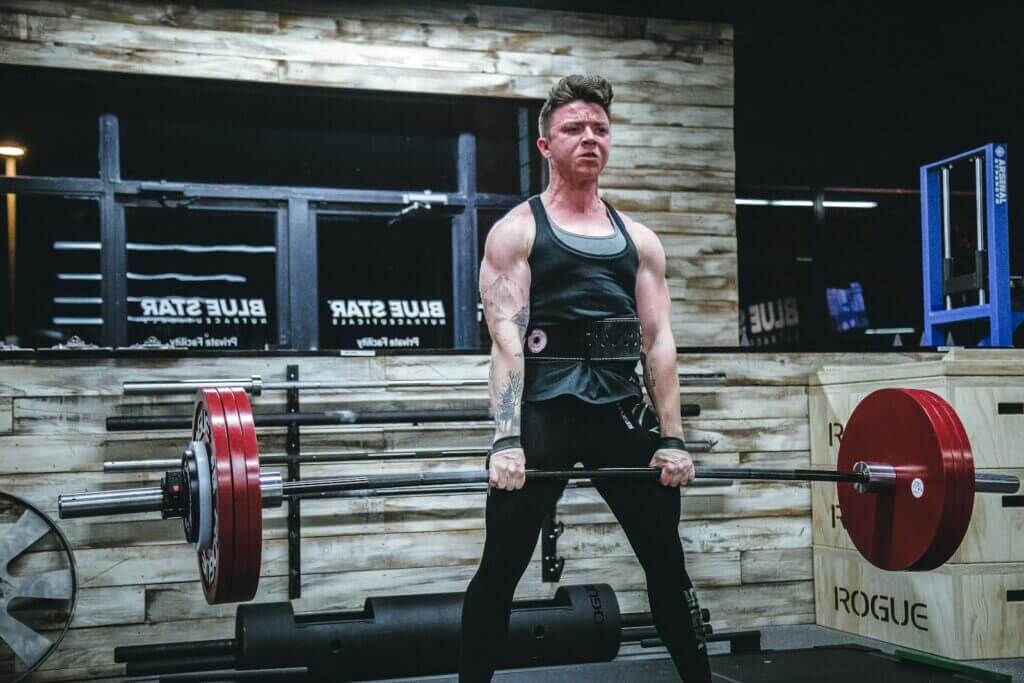
Which Muscles Are Worked:
During this exercise, the following muscle groups are engaged:
- Primary Muscles: Hamstrings, glutes, lower back (erector spinae).
- Secondary Muscles: Core stabilizers, upper back (trapezius, rhomboids), forearms (grip strength).
Alternative Similar Movements:
If you’re seeking variation or targeting specific muscle groups, consider incorporating these alternative exercises:
- Conventional Deadlift
- Single-Leg Romanian Deadlift
- Good Mornings
- Hip Thrusts
- Kettlebell Swings

Shop Fitness gear now on Amazon
See Amazons extensive range of workout gear here. (Affiliate Link)
Importance of Proper Warm-Up and Mobility
Before engaging in Romanian Deadlifts, it’s crucial to prepare your body adequately to prevent injury and optimize performance. A thorough warm-up increases blood flow to the muscles, enhances flexibility, and primes the nervous system for the demands of the exercise. Begin with 5-10 minutes of light cardiovascular activity, such as brisk walking or cycling, to elevate your heart rate. Follow this with dynamic stretches focusing on the lower body, including leg swings, hip circles, and lunges with a twist, to improve joint mobility and muscle elasticity. Incorporating foam rolling can also help release muscle tension and improve tissue quality. Specifically, target the hamstrings, quadriceps, and glutes to ensure these muscles are pliable and ready for action. By dedicating time to a proper warm-up and mobility routine, you set a solid foundation for performing RDLs with optimal form and reduced risk of injury.
Breathing Techniques During the Romanian Deadlift
Proper breathing is often overlooked but plays a vital role in maintaining stability and performance during the Romanian Deadlift. Coordinating your breath with the movement enhances core engagement and helps maintain intra-abdominal pressure, supporting the spine. As you initiate the downward phase by hinging at the hips, inhale deeply through your nose, filling your diaphragm. This inhalation braces your core, providing stability. During the upward phase, as you return to the starting position, exhale steadily through your mouth. Avoid holding your breath throughout the entire movement, as this can lead to increased blood pressure and dizziness. Instead, focus on a controlled breathing pattern that aligns with your lifting tempo. Practicing proper breathing techniques not only supports spinal alignment but also enhances overall performance by ensuring your muscles receive adequate oxygen during exertion.
Integrating Romanian Deadlifts into Your Workout Routine
Incorporating Romanian Deadlifts into your training regimen can significantly enhance lower body strength and posterior chain development. Depending on your fitness goals, RDLs can be programmed in various ways. For strength building, consider performing 3-5 sets of 4-6 repetitions with heavier weights, ensuring adequate rest between sets for recovery. If muscular endurance or hypertrophy is your aim, 3-4 sets of 8-12 repetitions with moderate weight may be more appropriate. Romanian Deadlifts can be scheduled on lower body or posterior chain-focused days, complementing exercises like squats, lunges, or hamstring curls. Ensure that you balance your routine by incorporating movements that target the anterior chain, such as quadriceps-focused exercises, to promote muscular symmetry and prevent imbalances. Always listen to your body and adjust volume and intensity based on your individual recovery and performance.
Addressing Common Discomforts and Preventative Measures
While the Romanian Deadlift is highly effective, some individuals may experience discomfort, particularly in the lower back or hamstrings. This discomfort often arises from improper form, such as rounding the back or overextending the knees. To mitigate these issues, focus on maintaining a neutral spine throughout the movement and ensure a proper hip hinge, avoiding excessive knee flexion. Incorporating accessory exercises that strengthen the core, such as planks or anti-rotational movements, can provide additional spinal support during the lift. If tight hamstrings are a concern, regular flexibility work, including static stretching and mobility drills, can improve range of motion and reduce tension. Listening to your body is paramount; if pain persists, consider consulting with a fitness professional to assess your technique or a healthcare provider to rule out underlying conditions. By proactively addressing discomfort and implementing preventative strategies, you can continue to perform Romanian Deadlifts effectively and safely.
Q&A for Romanian Deadlifts
How to properly do a Romanian deadlift?
To properly do an RDL, maintain a slight bend in your knees, hinge at your hips, and keep your back flat. Lower the barbell until you feel a stretch in your hamstrings, then drive your hips forward to return to the starting position.
How to do RDLs for beginners?
Beginners should start with light weights to focus on mastering the form. Consider using dumbbells or a resistance band for more control and gradually increase the weight as your strength improves.
How to do deadlift in RDL?
An RDL is a specific type of deadlift that emphasizes the hip hinge movement. Unlike the conventional deadlift, the RDL starts from a standing position and focuses on lowering the weight with a slight bend in the knees and hinging at the hips.
Do you bend your knees in RDL?
Yes, you should keep a slight bend in your knees during an RDL. The emphasis is on hinging at the hips while maintaining a slight knee bend to avoid unnecessary strain on your lower back.
Are RDLs worth it?
Absolutely, RDLs are worth incorporating into your routine. They effectively target the hamstrings and glutes, improve posterior chain strength, and enhance overall athletic performance.
Why don’t I feel RDLs in my glutes?
If you don’t feel RDLs in your glutes, you may not be engaging them properly or not hinging your hips enough. Focus on squeezing your glutes at the top of the movement and ensure you’re hinging correctly.
What are the common mistakes in RDL?
Common mistakes include rounding the back, bending the knees too much, lifting too heavy, and not engaging the core. Ensuring proper form and technique is crucial to avoid these errors.
Why is RDL so hard?
RDLs are challenging because they require strong hamstrings and glutes, as well as proper hip hinge mechanics. They also demand good flexibility and core stability to perform correctly.
Should legs be straight during RDL?
No, your legs should have a slight bend during the RDL. This helps protect your knees and lower back while allowing a greater stretch in the hamstrings.
How far down should RDLs go?
RDLs should go down until you feel a significant stretch in your hamstrings, typically just below the knees. The exact depth can vary depending on your flexibility and range of motion.
Is RDL more glutes or hamstrings?
The RDL targets both the glutes and hamstrings, but it tends to emphasize the hamstrings more. Proper form and technique can help ensure both muscle groups are effectively engaged.
Should RDLs touch the ground?
No, the weights should not touch the ground during an RDL. The movement focuses on lowering the weight until you feel a stretch in the hamstrings, which usually occurs before reaching the ground.
What is a Russian deadlift?
A Russian deadlift is another term for the Romanian Deadlift (RDL). Both exercises refer to the same movement focusing on the hip hinge and targeting the posterior chain.
Do you squeeze glutes at top of RDL?
Yes, squeezing your glutes at the top of the RDL helps engage the muscles and ensures proper hip extension. This enhances the effectiveness of the exercise.
Should the bar touch your legs during RDL?
Yes, the bar should stay close to your legs throughout the movement, almost grazing them. This helps maintain proper form and reduces strain on your lower back.
How do I know if I’m doing RDLs right?
You’ll know you’re doing RDLs right if you feel a stretch in your hamstrings without pain in your lower back, and your back remains flat throughout the movement. Practicing in front of a mirror or getting feedback from a trainer can also help.
How to RDL correctly?
To RDL correctly, hinge at your hips with a slight bend in your knees, keep your back flat, and lower the weight close to your legs until you feel a stretch in your hamstrings. Drive your hips forward to return to the starting position while keeping your core engaged.
Where should I be feeling my RDLs?
You should primarily feel RDLs in your hamstrings and glutes. You might also feel engagement in your lower back and core muscles if you’re maintaining proper form.
Conclusion:
The Romanian Deadlift is a versatile and effective exercise that should be a staple in any strength training or CrossFit regimen. By mastering the RDL, you’ll build a strong posterior chain, enhance your overall athletic performance, and reduce the risk of injury. So, grab a barbell or dumbbells, focus on your form, and start reaping the benefits of this powerful movement.

Shop Fitness gear now on Amazon
See Amazons extensive range of workout gear here. (Affiliate Link)

